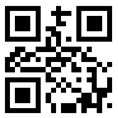The field of biomedical science is a special professional area. Due to the high technical content of its patent literature, and because biomedical patent literature is also legal literature, the difficulty of translation has increased a level. Therefore, if we want to translate foreign patent literature in the biomedical field into Chinese patent literature that meets professional requirements and has high accuracy, the requirements for translators are even higher. In addition to basic translation skills, translators also need to master the general rules of translation. Moreover, it is important to have specialized knowledge in the biomedical field, and relevant knowledge of patent law should also be given special attention. It is precisely because of this characteristic of biomedical literature that the translation of biomedical literature is very difficult. Translators need to understand these characteristics and have years of experience and translation skills. The following are the main characteristics of patent literature in the biomedical field and translation considerations.
First, we should pay attention to the syntactic characteristics. The characteristic of biomedical patent literature translation is that due to its specificity and the complexity of describing medicine, long sentences are often used to express grammar, allowing multiple closely related contents to be clearly expressed. Compound sentences are one of the important and obvious syntactic features of patent specifications, and the use of subordinate clauses and other extended sentence structures is also an important sentence type. Therefore, to do a good job in biomedical translation, it is essential to be proficient in mastering and using these sentence types.
Second, the use and accumulation of specialized terms. The specialized literature in the biomedical field mainly describes specialized knowledge, thus requiring the use of a large number of specialized vocabulary. Since medical patent literature is accompanied by specifications for the convenience of others to read, and the main readers of the specifications are professionals in the field, the frequency of specialized terms used in patent literature is very high. Therefore, translators should pay special attention to the translation norms of terms, as many terms have fixed translation norms and application standards. This requires translators to observe more, accumulate more, and read more foreign literature in the medical field, paying attention to the use of specialized terms and consulting reference books when necessary. Because the medical field is different from other fields, it requires particularly strict translation results. Sometimes, due to a different word, the overall effect of the translation can be greatly discounted.
Third, the biomedical field is closely related to animals, plants, and microorganisms. Therefore, the translation of specialized biomedical literature often involves the translation of the Latin names of animals, plants, and microorganisms. Sometimes, it is obvious that they are the same species, but due to different translation methods, confusion arises, causing serious problems for translators. Therefore, to avoid confusion caused by different translation methods, when translating the names of animals, plants, and microorganisms, it is necessary to indicate the Latin name of the species the first time it appears in the document and ensure that the same specialized terms are consistent and accurate throughout the translation of the patent document.
Another point to note is new terms. With the rapid development of modern science and technology, leading technologies are constantly being updated. New terms often describe advanced technologies in a certain field. Due to the development of modern technology, new terms frequently appear in patent literature translation. These new terms, including technical terms and new species terms, often appear in the field of new drug research and development, and special attention should be paid during translation. When new terms have not been published, translators should express the intended content as accurately as possible and attach the meaning of the original text to the translation.
Therefore, the translation of biomedical patent literature not only relies on language mastery to convey information but also pays attention to the flexibility and accuracy of language use. Therefore, in the translation of biomedical patent literature, it is essential to master a wide range of specialized knowledge, which is particularly helpful for correctly understanding and accurately expressing the original text. However, mastering specialized knowledge is not easy, especially in this rapidly developing technological era where new things emerge endlessly. To better translate patent literature in the biomedical field, it is necessary to use reference books and advanced online tools correctly and effectively. The choice of reference books is also important. We must find authoritative reference books to avoid errors in the translation of specialized terms. We can also refer to technical manuals or textbooks and other authoritative materials.


